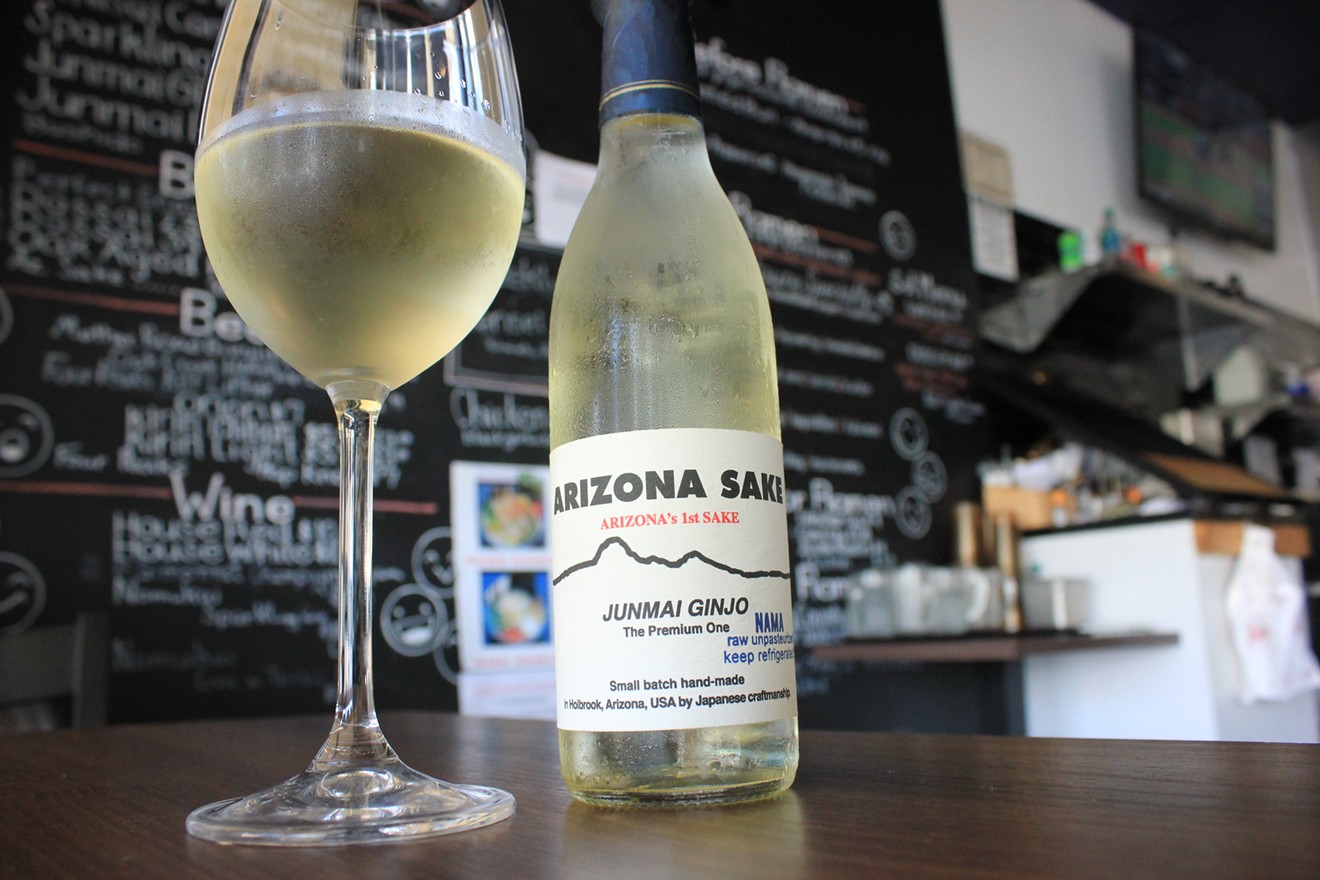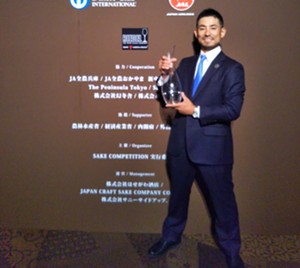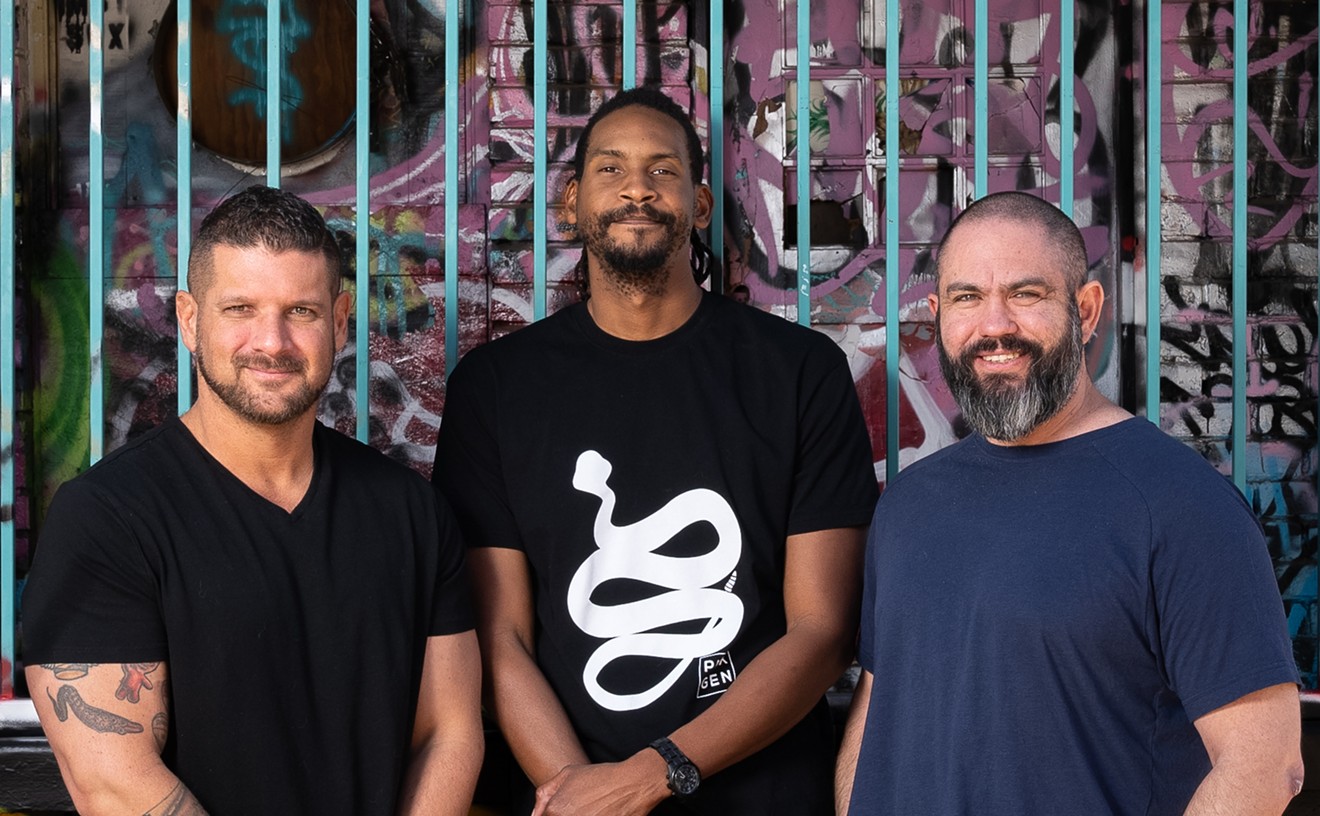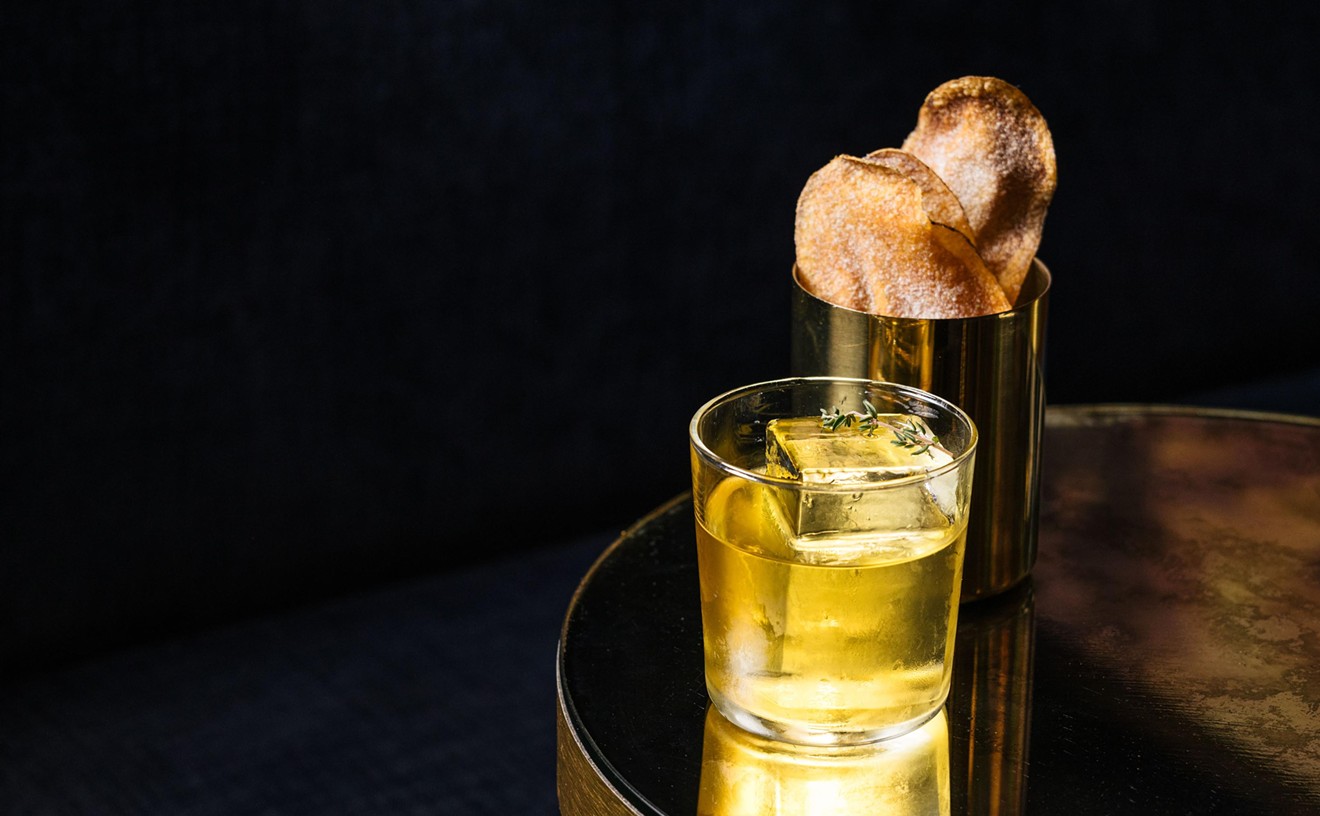Last month, the results of Tokyo's 2018 Sake Competition were released. According to the capital of the sake world, after two rounds of judging and a gauntlet that spanned a season, the world's best sake made outside Japan is made right here in Arizona.
If you have tried Arizona Sake, this won't surprise you.
Atsuo Sakurai, a native of Yokohama, Japan, brews small batches of Arizona Sake at his Holbrook, Arizona, home. He works in an air-conditioned garage and makes 50 gallons of sake at a time. He makes raw, unfiltered junmai ginjo, a pure sake style that limits ingredients to rice, water, yeast, and koji (a kind of fungus).
The accolades are huge to Sakurai, who dreams of opening a sake brewery. (Long pause for effect.) Before he moved to Arizona, his wife's home state, Sakurai worked at a string of sake breweries in Japan.
"I was happy, of course," he says of the honors. "I was happy to make my clients happy."
Sakurai started brewing in Holbrook in January 2017. Already, he has wowed the toques off some of metro Phoenix's top culinary talents, some of whom have started to get tastes of his new sparkling sake.
"It's very special because it's not pasteurized," says Nobuo Fukuda, of Nobuo at Teeter House. "His sake is not heated; it's very fresh. It's almost kind of like a firework. It's almost a big pop. And then it kind of disappears."
It didn't take much to convince Kevin Binkley of Binkley's Restaurant. "Right away when he left a sample, we wanted to buy some," Binkley says. "I think what he's creating is pretty unique and pretty special."
Josh Hebert serves Arizona Sake by the bottle and glass at Hot Noodles Cold Sake in Scottsdale. "People go nuts for it," he says. "It has that kind of just tropical fruit nose, but it really comes across being more balanced than that. The texture is just creamy and rich ..."
The flavors of Arizona Sake are clean and wild and bright.
When I first tasted Sakurai's junmai ginjo, the sake brought a tsunami of fresh florals, rounded by fleeting bright fruit notes on the edges, fruit like lemon and apricots. It was like a blast of spring, the kind of halcyon spring you imagine from winter. But the second time was different.
The second time, earlier this week, the sake tasted like bananas and peach. The florals had shifted to the outer edges, and the fruit to the center. Both times, there was a current of something akin to the uplifting clean feeling you get from fresh milk or cream, but more elusive and fragrant, with rice as the vital source.
Binkley agrees that the flavor changes. He notices different nuances from week to week. A bottle will morph the longer it stays around, because, for one, this is an unpasteurized, living product. He recommends letting Arizona Sake warm a little before tasting. So, too, does Hebert.
All three chefs note the sake's versatility when it comes to food pairings. They also note the surprise upon first drinking the sake: their own surprise and the surprise on the faces of customers.
"Typically sake will go with lighter dishes and Asian-inspired dishes," Binkley says. "But we think sake goes with a lot of things. We do a peach soup, and we think his sake goes really well with that."
Sakurai's sake breaks the mold for a lot of reasons. He is an adept sake-maker with long experience. He uses high-quality ingredients in a region where sake isn't really made. He makes small batches, and, brewing on a nano scale, he's able to imbue his sake with some of personality. He doesn't filter. He doesn't pasteurize. He ditches sake rice for a non-sake strain of California rice. He uses local Arizona water.
He cites Arizona's climate as the main thing that makes his sake different. "In northern Arizona, it's not too hot except in the mid-summertime," he says. "The dry heat is really clean. If you have moisture in your air, other germs and fungus is very active."
"Other germs and fungus" refers to those not koji.
"Making koji is all about controlling the moisture and temperature," he says. "It's very hard to take water from your room. But it's very easy to add water to your atmosphere."
You can find Sakurai's magical product at vendors including Fujiya Market, Tops Liquor, House of Rice, New Tokyo Food Market, La Grande Orange, Hidden Track Bottle Shop, and Arcadia Premium.
You can also find this lush sake at area restaurants including Glai Baan, SoSoBa, Roka Akor, the ones mentioned a few paragraphs north up your screen, and other places. A glass may set you back close to what you pay for an entree. But you are getting a libation electric and groovy and world-class, a beautiful antidote to the heat of an Arizona summer.
[
{
"name": "Air - MediumRectangle - Inline Content - Mobile Display Size",
"component": "18478561",
"insertPoint": "2",
"requiredCountToDisplay": "2"
},{
"name": "Editor Picks",
"component": "16759093",
"insertPoint": "4",
"requiredCountToDisplay": "1"
},{
"name": "Inline Links",
"component": "17980324",
"insertPoint": "8th",
"startingPoint": 8,
"requiredCountToDisplay": "7",
"maxInsertions": 25
},{
"name": "Air - MediumRectangle - Combo - Inline Content",
"component": "16759092",
"insertPoint": "8th",
"startingPoint": 8,
"requiredCountToDisplay": "7",
"maxInsertions": 25
},{
"name": "Inline Links",
"component": "17980324",
"insertPoint": "8th",
"startingPoint": 12,
"requiredCountToDisplay": "11",
"maxInsertions": 24
},{
"name": "Air - Leaderboard Tower - Combo - Inline Content",
"component": "16759094",
"insertPoint": "8th",
"startingPoint": 12,
"requiredCountToDisplay": "11",
"maxInsertions": 24
}
]














